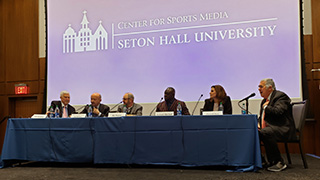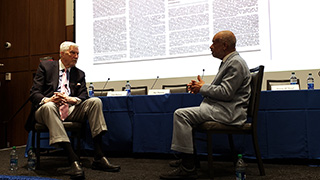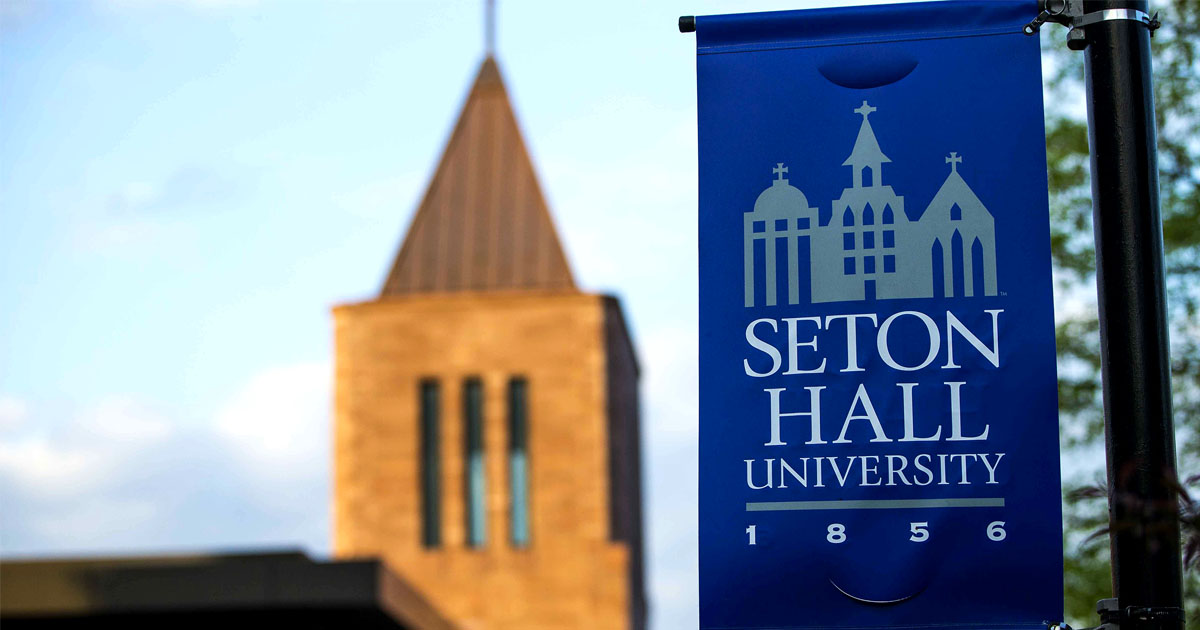 College sports are undergoing significant change. Name, Image and Likeness (NIL) has moved athletics to a pay-to-play model, while the transfer portal gives them newfound access to join and leave programs as many times as they want. Last month, the Dartmouth College men’s basketball team voted to unionize, the first group of student-athletes to form a bargaining unit in the country.
College sports are undergoing significant change. Name, Image and Likeness (NIL) has moved athletics to a pay-to-play model, while the transfer portal gives them newfound access to join and leave programs as many times as they want. Last month, the Dartmouth College men’s basketball team voted to unionize, the first group of student-athletes to form a bargaining unit in the country.
In the ever-changing landscape of college athletics, students must learn the importance of adaptability if they aspire to someday work in this profession.
On April 21, the Center for Sports Media and the Center for Sports Management hosted an event to examine the issues facing college sports with five respected experts. The 90-minute discussion covered everything from the NIL to unionization to the transfer portal to the myriad lawsuits against the NCAA, allowing students to connect and learn from some of the most influential thought leaders in athletics.
 Center for Sports Media founder Bob Lay kicked off the event with a table presentation before welcoming Center for Sports Management Director Charles Grantham and former congressman, NBA player and Rhodes Scholar Thomas McMillan to the stage for a 25-minute discussion on the current state of college athletics.
Center for Sports Media founder Bob Lay kicked off the event with a table presentation before welcoming Center for Sports Management Director Charles Grantham and former congressman, NBA player and Rhodes Scholar Thomas McMillan to the stage for a 25-minute discussion on the current state of college athletics.
Grantham pioneered advocacy for the compensated student-athlete, first writing an article calling for college basketball players to be paid New York Times 34 years ago. The title of this article was “Time to Cut College Players.”
McMillan is the current president and CEO of LEAD1, a membership association representing 133 NCAA FBS athletic directors. McMillan himself describes the purpose of the organization to “bring [athletic directors] together and rally around issues.”
College athletics is a billion dollar business. Is there an easy solution to revenue sharing? No, but given his long involvement in the field, McMillan provided his solution to accommodate all parties.
“I would like to see the student-athlete model stay,” he said. “I would like these high revenue sports to have some kind of reward for these athletes. I would like to see Title XI upheld. I would like to see educational incentives for kids to get degrees. I would like to see a whole new model of college sports that is fully aligned with our institutions of higher learning, but also expands opportunities in all areas.”
Following Grantham and Macmillan’s talk, an expert panel chaired by Bob Lay, including
Athletic writer Dana O’Neill, former New York Giants shortstop Leonard Marshall (MFin, ’07), and journalist/author Joe Nocera joined the stage to expand the conversation regarding college athletics.
The panel offered different perspectives on current issues in the industry, offering students the opportunity to evaluate different thoughts on the NIL, the transfer portal and the NCAA.
Nocera was adamant that the NCAA should move to a contract-based model similar to that of any other professional industry.
“Jay Bilas has always had a great position on this,” Nocera said. How will you pay the players? And Bilas says, “Well, you know, we have this thing in America. This is called a contract. You say to the midfielder, “Okay, I’ll pay you $250,000 a year for three years, but you have to stay here for three years; you cannot transfer. You are doing this for the people who create the economy of the university.”
Marshall, who spent four years as a football star and is in the school’s Hall of Fame, had a different take on the pay-to-play model as a former student-athlete.
“For a young kid, my mentality would be … I would have a different perspective on it,” Marshall said. “I know I get scholarships to play this sport. I know I play the most lucrative sport on campus. What is my purpose when I go there? Get my education. Go to the NFL.
From O’Neill’s perspective, the NCAA’s persistence has alarmingly shaped the current landscape of college athletics. “There are so many mistakes and so many they (the NCAA) are trying to fix retroactively,” she said. “Everybody’s playing catch-up because the NCAA decided to be the ostrich with its head in the sand for so long and it led to a disastrous crossover.”
You can watch the entire symposium here.
About the Seton Hall Sports Media Center
The Sports Media Center, housed in the College of Human Development, Culture and Media, operates at the intersection of sports media and social life, reflecting the legacy of its founder, Bob Lay, and his groundbreaking ESPN show, Outside the lines. Established in Fall 2021, the Center is working to redefine the way students learn in media, communications and sports business by engaging with the sports community while producing innovative content through university channels and establishing innovative partnerships with major media outlets . Through the activities generated and inspired by the Sports Media Center, Seton Hall continues its tradition of innovation in higher education and emphasizes its commitment to experiential learning, ethical leadership and community engagement.
Categories: Athletics

